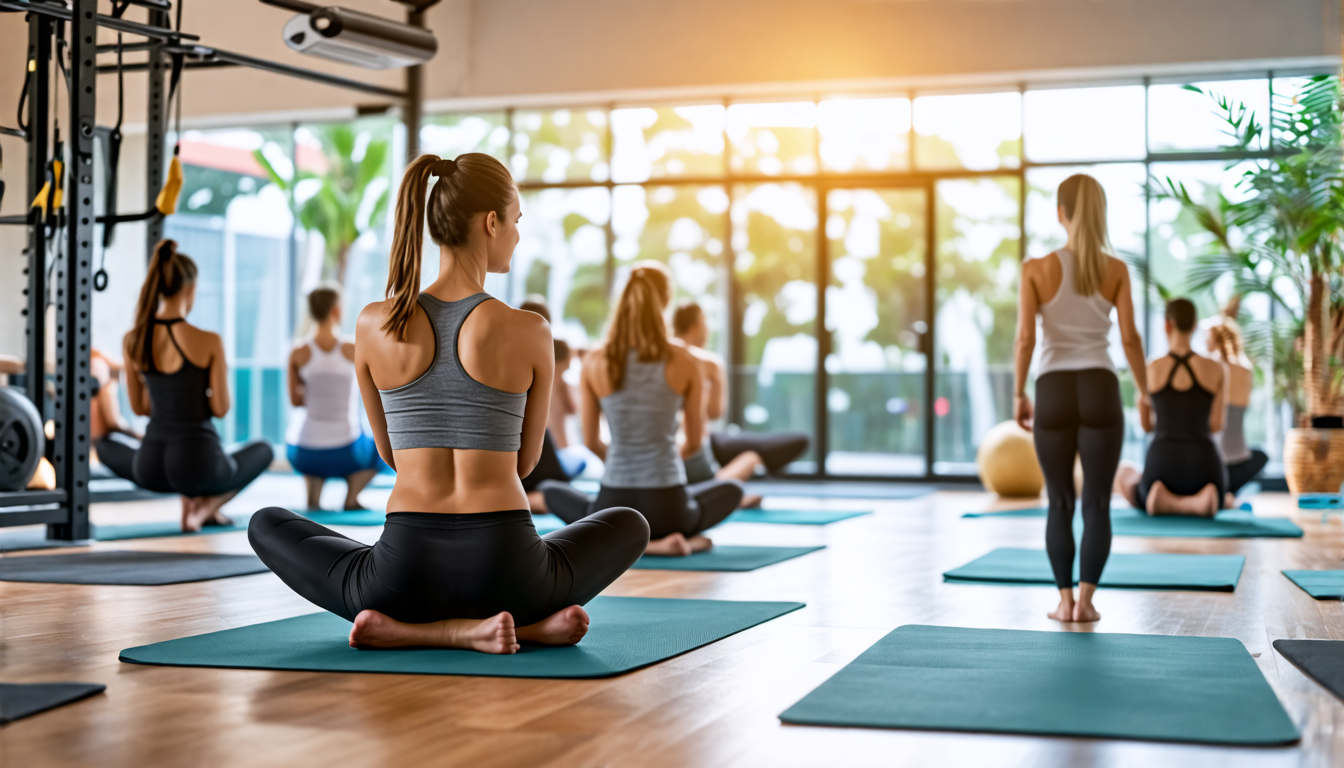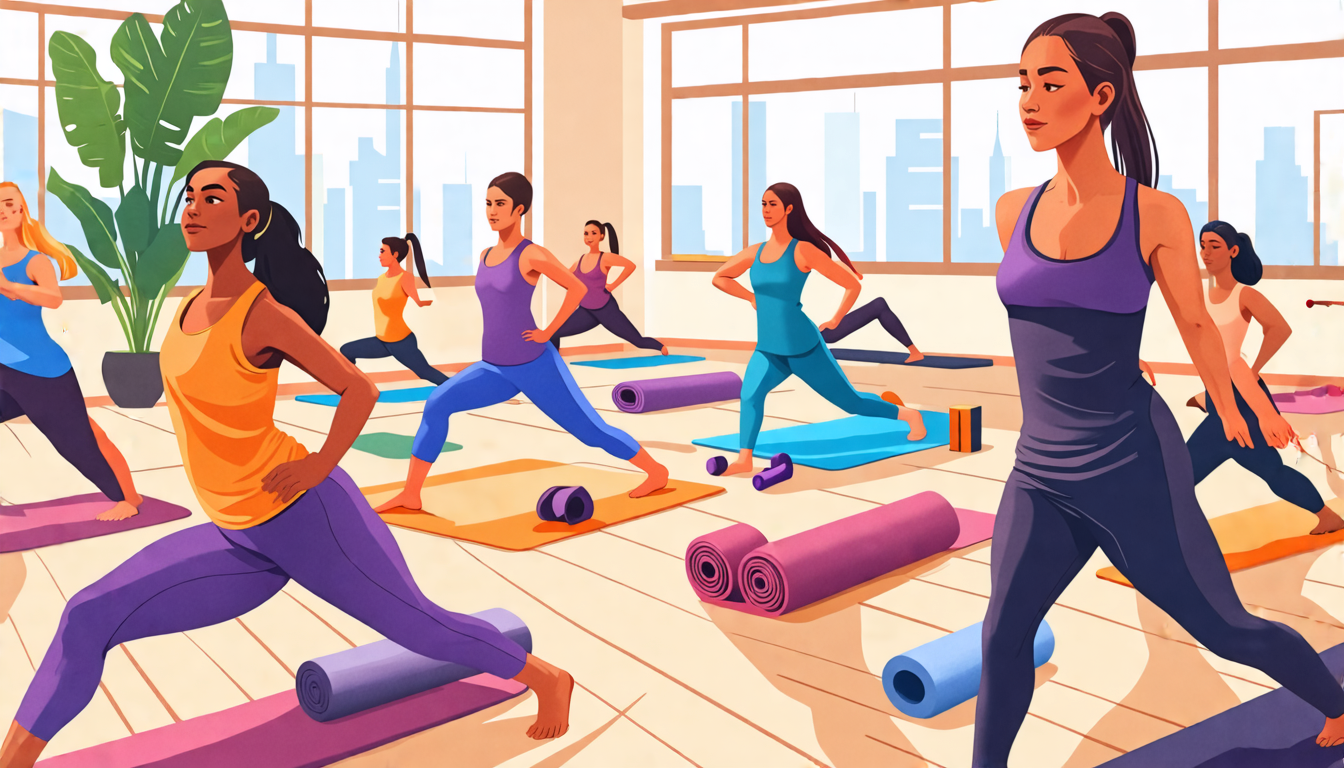Flexibility and mobility are crucial components of overall fitness, especially for beginners embarking on their fitness journey. Flexibility refers to the ability of your muscles to lengthen, while mobility is the range of motion within your joints. Incorporating flexibility and mobility workouts into your routine is essential for improving posture, preventing injuries, and enhancing overall physical performance. These workouts ease daily activities by reducing muscle tension, increasing coordination, and promoting better balance. By dedicating time to simple stretching routines and basic mobility exercises, you can significantly boost your movement and create a foundation for a healthier lifestyle.
Introduction to Flexibility and Mobility for Beginners
Flexibility and mobility are often used interchangeably, but they refer to different aspects of fitness. Flexibility is the ability of your muscles and soft tissues to stretch, while mobility is the range of motion within your joints. For beginners, understanding these concepts is crucial as they form the foundation for improved physical health and functional movement.
Overview of Flexibility and Mobility
Flexibility involves the elasticity of muscles and how far they can lengthen. It primarily focuses on the muscles and their ability to stretch. Common flexibility exercises include static stretches such as touching your toes or holding a yoga pose like the forward fold.
Mobility, on the other hand, encompasses the ability of your joints to move through their full range of motion. It’s about how well and how efficiently our bodies move. Mobility exercises might include dynamic stretches and movements that take joints through their full range of motion, such as hip circles or shoulder rolls.
Importance of Incorporating Flexibility and Mobility Workouts
Incorporating flexibility and mobility workouts into your fitness routine is essential for several reasons. These workouts not only improve athletic performance but also enhance daily activities, making movements more efficient and pain-free. Here’s why they are important:
- Injury Prevention: Flexible and mobile joints are less susceptible to injuries. By enhancing your flexibility and mobility, you’re less likely to suffer from strains, sprains, or other injuries that can arise from sudden movements.
- Enhanced Performance: Whether you’re trying to lift weights, run, or even just walk, having good mobility and flexibility ensures that your muscles and joints work in harmony, leading to better overall performance.
- Improved Posture: Flexibility and mobility exercises help counteract the negative effects of prolonged sitting and poor posture, allowing your body to maintain proper alignment. This can alleviate back and neck pain associated with poor posture habits.
- Better Recovery: These exercises can aid in faster recovery as they increase blood flow to the muscles and reduce muscle soreness after workouts.
Benefits for Physical Health and Daily Activities
Flexibility and mobility workouts offer numerous benefits that can significantly improve your physical health and daily life:
- Enhanced Range of Motion: Increasing your flexibility and mobility helps ensure that you can perform everyday tasks more easily, from bending down to pick up something to reaching overhead without discomfort.
- Reduced Muscle Tightness: Regular stretching and mobility work can alleviate muscle tightness, reducing the risk of chronic pain and enhancing overall comfort levels throughout the day.
- Improved Balance and Coordination: With better mobility, your body moves more fluidly, leading to improved balance and coordination. This translates to safer and more confident movements in your daily activities.
- Mental Relaxation: Flexibility exercises, particularly those inspired by yoga, often incorporate breathing techniques that promote relaxation and reduce stress, positively impacting mental health.
In conclusion, for beginners, integrating flexibility and mobility exercises into your routine is a vital step towards achieving overall fitness and well-being. Understanding the importance and benefits of these workouts will set the groundwork for a healthier, more flexible, and mobile body ready to tackle both fitness challenges and everyday activities with ease.

Top Beginner Flexibility and Mobility Workouts
Simple Stretching Routines to Enhance Flexibility
Stretching is a fundamental aspect of improving flexibility. Here are some essential stretches that anyone, regardless of fitness level, can perform:
- Hamstring Stretch: Sit on the ground with your legs extended. Reach forward towards your toes, keeping your back straight. Hold for 20-30 seconds to stretch your hamstrings.
- Quad Stretch: Stand on one leg, grab your ankle with your hand, and gently pull your heel towards your buttocks. Hold for 15-20 seconds and repeat on the other leg.
- Child’s Pose: Start on all fours, then sit back on your heels, extending your arms forward and lowering your head towards the floor. This stretch targets your back and shoulders.
- Cat-Cow Stretch: On all fours, alternate between arching your back (cat pose) and dipping it down (cow pose). This stretch improves spinal flexibility and relieves tension.
- Butterfly Stretch: Sit on the floor, bring the soles of your feet together, and let your knees drop towards the ground. Hold your feet and gently press your knees down to stretch your inner thighs.
Incorporating these simple stretches into your routine can significantly enhance your flexibility over time with consistent practice.
Basic Mobility Exercises to Boost Movement
Improving mobility is crucial for better movement and reducing the risk of injury. Below are a few basic mobility exercises tailored for beginners:
- Hip Circles: Stand with your feet shoulder-width apart. Place your hands on your hips and slowly rotate them in a circular motion. Perform 10 circles in each direction to increase hip mobility.
- Arm Circles: Extend your arms out to the sides and make small, controlled circles. Gradually increase the size of the circles. Perform this for 30-60 seconds to improve shoulder mobility.
- Ankle Rolls: Sit or stand and lift one foot off the ground. Rotate your ankle in circles, first in one direction and then the other. Repeat for 10-15 circles on each ankle to enhance ankle mobility.
- Thoracic Spine Rotations: Sit on the floor with your legs crossed. Place your hands behind your head. Rotate your upper body to the right and then to the left, holding each position for a few seconds. Do 10-15 rotations on each side to increase upper back mobility.
- Lunge with Twist: Step forward into a lunge position. Twist your torso towards the side of your front leg and hold for a few seconds before returning to the start position. Perform 10 repetitions on each side to boost hip and spine mobility.
These exercises are designed to be simple yet effective in enhancing your overall mobility, making daily activities easier and more comfortable.
Tips for Creating a Consistent Workout Routine
Consistency is key when it comes to reaping the benefits of flexibility and mobility workouts. Here are some tips to help you establish and maintain a regular exercise routine:
- Set Realistic Goals: Start with small, achievable goals and gradually increase your targets as your flexibility and mobility improve. Realistic goals will keep you motivated and on track.
- Create a Schedule: Dedicate specific days and times for your workouts. Treat these sessions as appointments that you cannot miss. This consistency will help turn exercise into a habit.
- Warm-Up and Cool Down: Always include a warm-up before starting your flexibility and mobility exercises, and a cool-down session at the end. This practice prepares your muscles for the workout and aids in recovery.
- Listen to Your Body: Pay attention to how your body feels during and after exercises. If you experience pain or discomfort, stop immediately and consult a healthcare professional if necessary.
- Mix Up Your Routine: To avoid boredom and keep things interesting, incorporate a variety of stretching and mobility exercises. Changing your routine can also prevent plateaus in your progress.
- Stay Hydrated: Drink plenty of water before, during, and after your workouts. Proper hydration is crucial for maintaining muscle elasticity and overall health.
- Use Proper Form: Ensure that you are performing each exercise with correct form. Poor form can lead to injury and reduce the effectiveness of your workouts. If in doubt, consider seeking advice from a fitness professional.
By following these tips, you can create a sustainable and effective routine that will improve your flexibility and mobility over time. Remember, consistency and commitment are your best allies in achieving your fitness goals.
Incorporating flexibility and mobility workouts into your routine, especially as a beginner, is invaluable for overall physical health and enhancing daily activities. Understanding flexibility and mobility, their significance, and the wide array of benefits they offer, can drive you to make these exercises a regular part of your lifestyle. Simple stretching routines can substantially improve your flexibility, while basic mobility exercises can significantly enhance your range of motion and movement efficiency.
As you start your journey into flexibility and mobility, remember to be patient and consistent. Gradual progress is key; pushing yourself too hard can lead to injury rather than improvement. The goal is to develop a sustainable and enjoyable routine that you can maintain over time. By dedicating even a small amount of time each day to these exercises, you’ll begin to notice enhancements in your physical capabilities, posture, and overall comfort in daily tasks. Empower yourself with this foundational knowledge and take the first steps toward a more flexible and mobile life.

